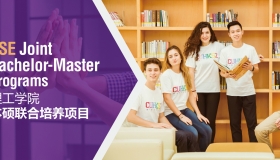Academic Seminars
Partial Ambiguity
Speaker: Dr. Bin MIAO
Institution: Shanghai University of Finance and Economics
14:30-16:00, Apr. 21, 2016
Room 105, Dao Yuan Building
Abstract: In extending Ellsberg's 2-urn paradox, we propose three intermediate forms of ambiguity. Interval ambiguity involves a symmetric range of possible compositions of red and black cards in a deck of 100 cards. Complementarily, disjoint ambiguity comprises two nonintersecting intervals of possible compositions. Two-point ambiguity involves n or 100-n cards red with the rest black. Our paper studies experimentally decision making with respect to these forms of ambiguity and corresponding compound risk with equally likely compositions. We arrive at three key findings: aversion to increasing the number of possible compositions in interval and disjoint lotteries, tight association between attitudes toward partial ambiguity and compound risk, and non-neutrality between two-point ambiguity and two-point compound risk. Our findings inform the intuition underpinning pessimism, shed light on the need to depart from reduction, and uncover a new phenomenon in the incidence of source dependence for stage-1 risk.
Beyond the Judicial Body: An Empirical Study of the Jury’s Impact around the World
Speaker: Dr. Zhuang LIU
Institution: The University of Chicago
14:30-16:00, Apr. 22, 2016
Room 502, Dao Yuan Building
Abstract: The jury is a fascinating institution that has evoked both praise and condemnation throughout its long history. Recently, the jury has also triggered debates in many countries as they reform their judicial processes. The impact of the jury system is both theoretically and practically important, but no comparative study has empirically tested the jury’s overall influence across different jurisdictions. This paper collects data for up to 102 countries from varied sources in order to analyze the impact of the jury. Controlling for legal origins, economic development, level of judicial corruption, and so forth, this study finds that judiciaries in countries that conduct jury trials have a higher level of public trust and maintain a stronger balancing power over their governments. Further, regression analyses show that, by maintaining higher levels of trust, these judiciaries also perform more effectively, not only in the criminal justice system (where jury trials are directly involved) but also in creditor right protection and contract enforcement cases (where the jury’s impact is certainly indirect). The seemingly paradoxical patterns that are identified—that the jury, which is designed to constrain judicial power, ends up empowering the judiciary, and that lay people, who are less proficient than professionals in deciding cases, in fact make the judiciary more effective—indicate an internal connection between the jury as a judicial body and as a political institution.
- Prev
- Next








